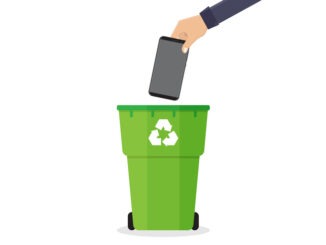
The rubbish pile is growing – what should dealers be doing?
E-waste – electronic products that are unwanted, not working, or at the end of their ‘useful’ life – is a heap of trouble. Per capita, the UK produces 23.9 kg of e-waste per year, and annually the country disposes of around 75 million tonnes of the stuff.
As a country, the UK generated the second largest amount of e-waste in the world in 2022, according to the Global E-Waste Monitor. Only Norway produces more, at 26 kg per person, and data suggests that by 2024, the UK will overtake Norway to become the world’s biggest contributor.
The problem for the UK is that Norway and third-placed Switzerland both have robust ‘take-back’ schemes in operation to encourage companies to take action. Take-back means companies that produce electrical or electronic equipment and batteries have to help with financing the e-waste and recycling industries.
Similar legislation does exist in the UK, under the waste electrical and electronic equipment (WEEE) regulations. This means retailers and distributors must provide a way for customers to dispose of equipment when they sell them a new version of the same item. All businesses putting electrical items into the market need to be aware of and comply with WEEE, whether a manufacturer, re-brander, seller, or importer of electrical and electronic equipment.
Being WEEE compliant
If you sell anything with a plug, you’re likely to be required to be WEEE compliant. This includes refrigeration equipment, screens, tablets, computers, telecommunications equipment and even some battery or solar powered items. Not being WEEE compliant can lead to fines and prosecution, so it’s important to understand the requirements of this regulation.
Dealers have a couple of options available to them to help them navigate the rules. For example:
- Take back waste yourself: When customers buy new electrical products from you, you must offer to take back the old item being replaced. You can have them bring the item to you for free, or can charge a reasonable amount to collect the items from them. The items can then be taken to a local Approved Authorised Treatment Facility (AATF) or collected by them for recycling.
- Work with manufacturers: Any company manufacturing electrical items will have its own recycling scheme in place. When you sell a new product to a customer, see if the manufacturer is able to offer collection and disposal of the old item under their own WEEE compliance activities.
- Join the distributor takeback scheme: The distributor takeback scheme (DTS) can be used if you sell less than £100,000 of electrical equipment per year, or if you only sell online. A fee to the DTS is payable, and the amount will depend on the size of your business and how much electrical equipment you sell. You will need to provide information to your customers regarding where they should take their WEEE for recycling.
All businesses selling electronic equipment should provide free written information to customers on which takeback service they provide, how they can reuse or recycle WEEE, why it needs to be treated separately to other waste and the impact of not recycling electronic equipment. For an online business, this can be published on the website. For brick-and-mortar retailers, the UK government recommends posters or leaflets in store.
The regulations require that records are kept of all electrical and electronic waste that you collect and dispose of. If you are handling disposal yourself, you will need to keep all the documentation you receive from the AATF as well. It is recommended to keep documents for four years.


Be the first to comment